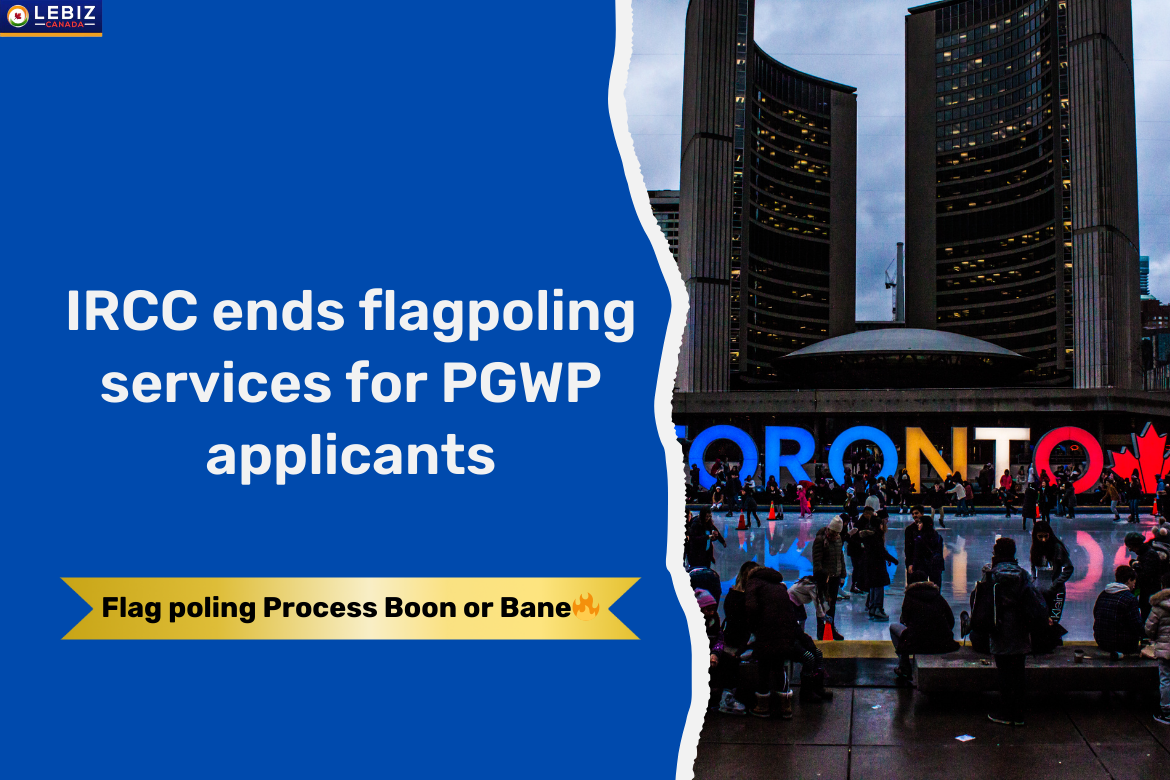As of June 21, Immigration Refugees and Citizenship Canada (IRCC) has announced that foreign nationals are no longer able to apply for a post-graduation work permit (PGWP) at their Canadian port of entry (POE).
What is Flagpoling?
Flagpoling is a term used to describe the process where individuals leave Canada, typically to the United States, and then re-enter the country to activate a new immigration status or renew an existing one, such as a work permit. This method was popular among PGWP applicants as it allowed for a quick turnaround time and avoided the need to submit an application through the usual channels.
This change is effective immediately.
Immigration Minister Marc Miller says this measure will reduce “flagpoling” and allow border officers more time to complete “enforcement activities.” It is also expected to reduce delays for travellers and speed up the movement of commercial goods between Canada and the United States.
Further, the department says that the change will increase “fairness amongst applicants” and it will continue to find other ways to reduce the use of flagpoling in future.
“While we continue to support and recognize the contributions of international graduates to Canada’s labour market, ‘flagpoling’ is unnecessary,” says Minister Miller. “The time and effort required to process applications from ‘flagpoles’ takes officers on both sides of the border away from their crucial role in protecting the safety, security and prosperity of Canadians and Americans. This measure will help prevent this practice, while maintaining the integrity of our immigration system.”
Some applicants use flagpoling to avoid the sometimes lengthy processing time for their PGWP. To address these concerns, IRCC says they are:
The Implications
With the discontinuation of flagpoling services for PGWP applicants, individuals are now required to apply for work permit extensions through the regular inland or outland application processes. This change has raised concerns among applicants who relied on flagpoling for a more efficient and straightforward renewal process.
Why the Change?
The IRCC’s decision to discontinue flagpoling services for PGWP applicants is aimed at streamlining the immigration process and ensuring consistency in how applications are processed. By shifting away from flagpoling, the IRCC hopes to create a more structured and standardised approach to issuing work permits and other immigration documents.
Moving Forward
For PGWP applicants affected by this change, it is essential to familiarise themselves with the new application procedures and requirements set forth by the IRCC. While the discontinuation of flagpoling may pose challenges for some individuals, it is important to adapt to the updated regulations and comply with the new guidelines to avoid any disruptions to their immigration status.
In conclusion, the IRCC’s decision to discontinue flagpoling services for PGWP applicants marks a significant change in how immigration processes are handled in Canada. While this change may present initial challenges, it is crucial for affected individuals to stay informed
and proactive in navigating the revised application procedures to ensure a smooth transition in their immigration status.
For more information regarding the updated application processes for PGWP extensions, applicants are encouraged to visit the official IRCC website for detailed instructions and guidance on how to proceed under the new regulations.
Further, the department says that the change will increase “fairness amongst applicants” and it will continue to find other ways to reduce the use of flagpoling in future.
“While we continue to support and recognize the contributions of international graduates to Canada’s labour market, ‘flagpoling’ is unnecessary,” says Minister Miller. “The time and effort required to process applications from ‘flagpolers’ takes officers on both sides of the border away from their crucial role in protecting the safety, security and prosperity of Canadians and Americans. This measure will help prevent this practice, while maintaining the integrity of our immigration system.”
Some applicants use flagpoling to avoid the sometimes lengthy processing time for their PGWP. To address these concerns, IRCC says they are:
- speeding up processing times for in-Canada work permit applications
- simplifying online application forms and processes so foreign nationals can continue working while they wait for a decision on their new application
- authorising workers to start working for a new employer right away, rather than waiting to have their new work permit application processed before changing jobs
According to IRCC, PGWP applicants accounted for one-fifth of the foreign nationals who attempted to flagpole From March 1, 2023, to February 29, 2024.
Recent changes to all flagpoling services
Recently the Canadian and United States governments announced changes to flagpoling services in general as a response to growing wait times and traffic at key POEs.
As a result of these changes flagpoling services at 12 Canadian POEs will have reduced hours of service.
To see a full breakdown of hours of service for all Canadian POEs, find IRCC’s dedicated webpage here.
